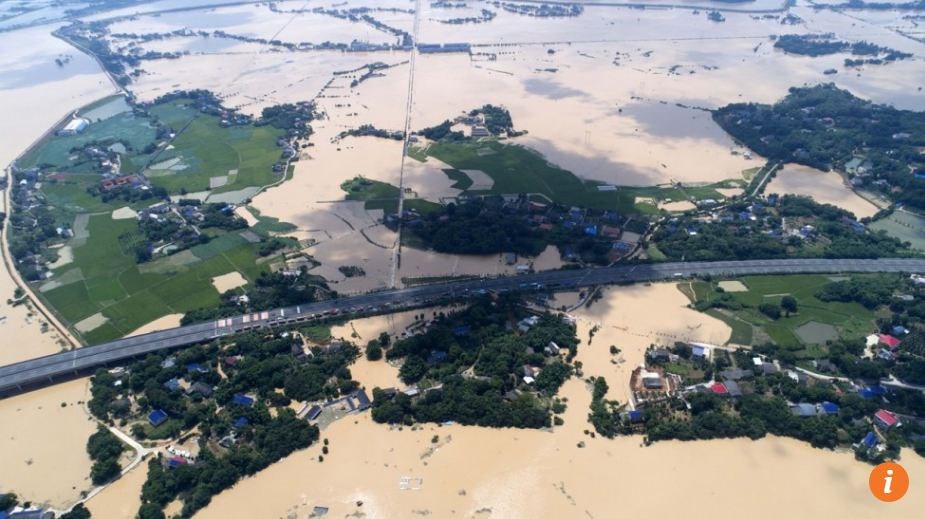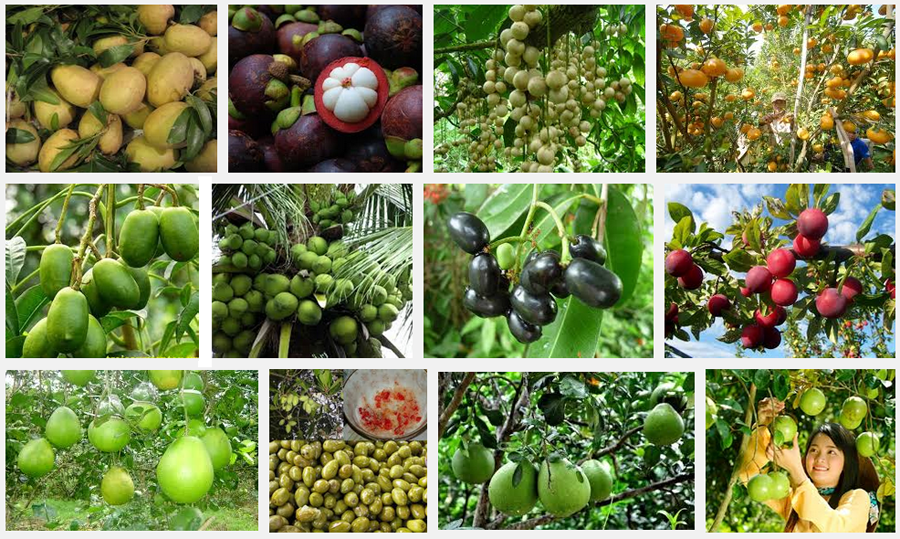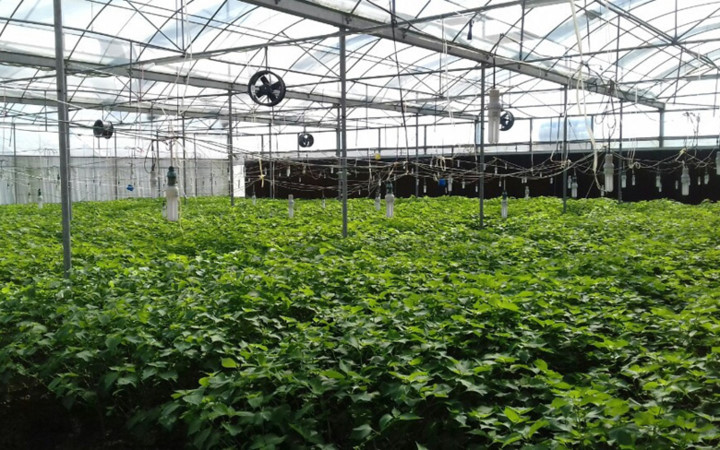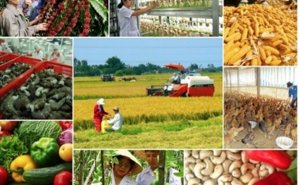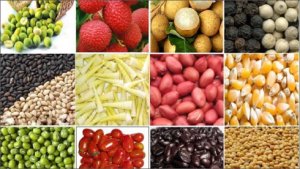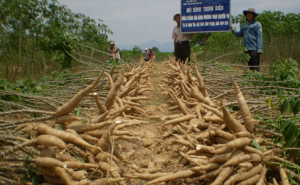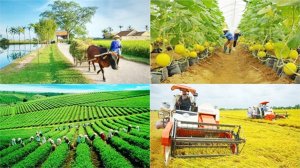|
Vietnam Agriculture in 2017 – An Impressive Lesson
Tuesday, 2018/01/09 | 14:01:39
|
|
BUI CHI BUU January 2018
Following impressive GDP growth of 6.81 per cent in 2017, the government has released a set of measures and priorities to achieve socio-economic development targets in 2018. Vietnam set a target of 2.94 per cent growth for the agriculture sector, with exports hitting $36.37 billion (a new record). The economy of Vietnam is the 47th largest economy in the world measured by nominal gross domestic product (GDP) and 35th largest in the world measured by purchasing power parity (PPP). The country is a member of APEC, ASEAN and the WTO. Vietnam has become a leading agricultural exporter and served as an attractive destination for foreign investment in Southeast Asia.
In 2017, Vietnam suffered 16 typhoons plus 6 tropical pressures, in particular “typhoon 12” with the most severe damage in the country. The critical loss was estimated as $ 2.65 billion (VND 60,000 billion) with the damage of 363,505 ha of cultivated crops; 386 people died and missed, 69,757 domestic animals died (the 2016 damage value of $US 1.80 billion).
Agriculture's share of economic output has continued to shrink from about 20% in 2016 to 16% in 2017. Total agricultural value in 2017 increased 3.16% as compared to 2016; including crop products of 2.23%, husbandry of 2.16%, forestry of 5.17% and fishery of 5.89%. Agriculturally, 2017 GDP growth rate obtained 2.94%. Vietnam unveiled a broad, "three pillar" economic reform program in early 2012, proposing the restructuring of public investment, state-owned enterprises, and the banking sector, little perceptible progress had been made by early 2013 and became much better in 2017. Agriculture restructuring in 2017 obtained better achievement to be an impressive lesson.
The export turnover of agriculture obtained $US 36.37 billion (13% increased); including agro-products, aqua-products and processed wood & furniture products of $US 18.96, $US 8.32 and $US 8.00 billion, respectively.
The conversion of rice cultivated areas with low economic efficiency into other crops, fishery, orchards, etc.. was recognized as 185.7 thousand ha.
Rice growing areas developed 7.72 million ha (26,100 ha decreased) with rice production of 42.84 million T (318.3 thousand T decreased) and average yield of 5.55 t/ha (0.02 t/ha decreased due to natural disaster). The milled rice export of 5.89 million T obtained the turnover value of $US 2.66 billion (22.3 % increased). In 2017, the largely concentrated rice field (cánh đồng lớn) obtained roughly 600,000 ha.
Maize growing area is 1.10 million ha (52,900 ha decreased) with average yield of 4.67 t/ha (0.11 t/ha increased). Total maize production gained 5.10 million T (527,000 T decreased).
Cassava growing area is 534,600 ha (34,400 ha decreased), and obtained 10.30 million T (569,100 T decreased), with cassava productivity of 19.34 t/ha (0.17 t/ha increased). The export turnover of cassava products offered $US 1.04 billion (4.2 % increased) with the volume of 3.95 million T (6.9% increased) as compared to 2016.
Vegetable areas increased up to 937,900 ha (29,500 ha increased) with the production of 16. 49 million T (562,800 T increased) and productivity of 17.60 t/ha (0.05 t/ha increased).
Fruit orchards developed 848,645 ha (52,500 ha increased, including Citrus, Mango, Banana, Dragon Fruit, Avocado, Pineapple, Longan and Durian of 26,000 ha; 6,000 ha, 2,000 ha, 4,000 ha, 3,000 ha, 4,000 ha, 2,000 ha and 3,000 ha increased, respectively as compared to 2016). Interestingly, export turnover of fruit and vegetable offered a new record of $US 3.45 billion (40.5% increased).
Legume crops obtained 149,000 ha (10,000 ha decreased), and gained the production of 162,300 t (5,300 T increased) with the productivity of 1.09 t/ha (0.03 t / ha increased).
Soybean growing area is 68,500 ha (16,100 ha decreased) with the production of 102,300 ton (22,000 T decreased) and productivity of 1.49 t/ha (0.03 t/ha increased).
Groundnut growing area covered 195,300 ha (4,100 ha decreased) with the production of 461,500 ton (2,100 T decreased) and the average yield of 2.36 t/ha (0.03 t/ha increased).
Sugarcane developed 280,500 ha (12,800 ha increased) with the production of 18.32 million T (1.11 million T increased) and average yield of 65.31 t/ha (1.03 t/ha increased).
Coffee growing areas is 664,600 ha (14,100 ha increased) with the average yield of 2.52 t/ha (0.08 t/ha increased) and the production of 1.53 million T (68,900 T increased). The export turnover of coffee offered $US 3.21 billion (3.8% decreased) with 1.42 million T (20.2% decreased). Coffee replanting farms have been carried out 96,000 ha (/120,000 ha planning).
Rubber area is 971,600 ha (1,900 ha decreased). The average yield offered 1.67 t/ha (0.01 t/ha increased) with total production of 1.08 million T (51,400 T increased). The export turnover of rubber obtained $US 2.26 billion (35.6% increased) with 1.39 million T (11% increased).
Cashew nut cultivated area is 297,500 ha (4,400 ha increased) with the productivity of 0.74 t/ha (0.34 t/ha decreased) and the production of 210,900 ton (94,400 T decreased). The export turnover of cashew nut products offered a new record of over $US 3.52 billion (23.8% increased) and a volume of 353,000 T (1.9% increased).
Black pepper growing areas are promoted over 152,000 ha (22,700 ha increased). Pepper production obtained 241,500 T (25,100 T increased) and the average yield gained 2.59 t/ha (0.05 t/ha decreased). Domestic market price dramatically downed in 2017 (two folds). The export turnover of black pepper offered $US 1.12 billion (21.9% decreased) with 214,000 t (20.5% increased).
Tea growing area is 129,300 ha (4,100 ha decreased) with the production of 1.04 million ton (7,200 T increased) and the average yield of 9.01 t/ha (0.3 t/ha increased). The export turnover of tea gained $US 229 million (5.6% increased) with the volume of 140,000 T (7.2% increased).
Sweet potato growing area is 120,000 ha and obtained 1.41 million T, with average productivity of 10.4 t/ha.
Coconut cultivated area is 145,000 ha including 128,000 ha for production with the average yield of 9.45 t/ha and the production of 1.21 million T.
In December 20, 2017, VietGAP certification was pinpointed in 1,495 farms with 19,213.5 ha, including coffee, tea, rice, fruit orchard and vegetable of 100, 1,488.8, 1,041.5, 13,119.3 and 3.463.8 ha, respectively.
Husbandry growth rate increased 2.16% as compared to 2016. It is lower than the country planning of 3%. Total meat production obtained 5.20 million T (3.2% increased), including the increment by chicken of 5.3%, beef of 4.2% and milk product of 12.6%. Milk product obtained 881,300 T (10.8% increased) and total egg gained 10.6 billion units (12.6% increased). Heads of pig decreased 5.7% due to over meat supply in the market (creating low price crisis roughly $ 0.7 – 1.0 per kg). However, cow, dairy cow and poultry continuously increased at 2.9%, 6.6% and 6.6%, respectively. Husbandry production has based on partnership models such as pork production’s value chain for both domestic and international markets in Hanoi, Bac Giang, Vinh Phuc, Dong Nai and Ho Chi Minh City.
Aqua-production obtained 7.22 million T (5.2% increased). Natural products gained 3.40 million T (5.1% increased). Culture production obtained 3.8 million T (5.3% increased) including brackish shrimp culture of 723,800 T (10.3% increased); Pangasius fish (Pangasius hypoththamus) of 1.25 million T (5.0% increased). Total value of aqua-products increased 5.89% as compared to 2016. It was higher than the planning of 5%. Aqua-product export turnover gained $US 8.4 billion (a new record).
In 2017, forestry production value increased 5.17% ; newly cultivated forest areas were developed 241,300 ha (1.2% increased). Coastal mangrove forest areas were newly planted with 1,723 ha, then 993 ha recovered. Covering areas by forest were estimated as 41.45% in the country. Sustainable forest management areas certified by FSC were 218,065 ha with 29 certifications. Wood and furniture export turnover obtained $US 8.0 billion (9.2% increased). In the country, there are 10 wood processing factories of MDF, HDF with the power of 1,568,000 m3 products/year; and 300 enterprises are producing “paper” with the capacity of 2.2 million T / year.
Salt-marsh areas developed 14,712 ha. Salt production obtained 650,000 T (51 % decreased due to erratic rainfall, heavy typhoon). Industrial salt product accounted for 31.2% with 5,095 ha (34% total salt-marsh areas) under new technologies applied.
Water irrigation potential meets the demand of 3.52 million ha of arable land, to assure 7.26 million ha of growing rice areas irrigated (95%), 1.65 million ha upland crops (45%). It means 18,000 ha and 16,000 ha increased in 2017 could be well irrigated and drainaged, respectively.
In 2017, MARD was launching his key project on “Promoting agro-products via processing and post-harvest technologies”. Rice loss due to postharvest dramatically downed to 10% from 13%. Mechanization in land preparation accounted for rice, sugarcane, maize and cassava as 93%, 82%, 70% and 70%, respectively. In term of harvesting, mechanization was applied for rice, sugarcane and tea as 50% (82% in Mekong delta), 20% and 25%, respectively. Agricultually, mechanized tools have increased 1.5-2.0 % as compared to 2016.
Based on the Cooperative Act in 2012; MARD established the project on “Developing 15,000 agri-cooperative farms up to 2020 fruitfully”. Today, there are 33,500 model farms, 11,688 modern cooperatives. It means that the volume has increased four folds after four years to carry out the important act.
In 2017, there are 1,955 new agro-entreprises (20% increased as compared to 2014-2016). The total agro-entreprises now comprised 5,700.
Number of households based on agriculture accounted for 53.7% and non-agriculture for 40%. Up to now, the country has developed 2,884 communes, which were standardized as newly rural development title (32.3%).
All statistical figures are highlighted from the MARD review in January 4 2018.
A tough examination has been just passed in 2016. An impressive lesson was again obtained in 2017. Other challenges will come due to (1) climate change, (2) small farm size and (3) fluctuation by markets in Vietnam agriculture how to smoothly integrate the world partnerships. Sustainable development could not perform well if our farmer income would be still low.
Thanks are due to our smart and hard-working farmers, scientists, entrepreneurs and policymakers to start-up the interesting year of agriculture in restructuring. |
|
|
|
[ Other News ]___________________________________________________
|


 Curently online :
Curently online :
 Total visitors :
Total visitors :
